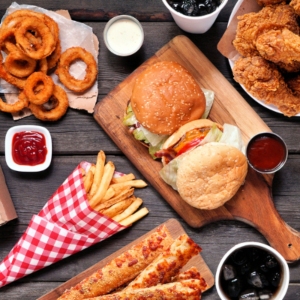 Author: Alex Hernandez (LE) at Face Reality Skincare
Author: Alex Hernandez (LE) at Face Reality Skincare
Acne is widely considered one of the most frustrating skin conditions, and there is a laundry list of ingredients that can exacerbate acne. Even worse? Unknowingly using topical products or eating foods that can irritate acne or even cause acne to form. While acne is an inherited condition of the pore, it can be controlled and prevented by adjusting lifestyle habits. We have put together some of the worst offenders for acne-prone skin and what ingredients to opt for instead. Let’s get started!
Topical Ingredients
 It only makes sense to begin with topical ingredients because when it comes to acne, people often start on the surface. Face Reality Skincare is dedicated to detecting and listing pore-clogging ingredients for our acne clientele to avoid. Of that long list, acne-prone skin must diligently avoid sodium lauryl sulfate, coconut oil, cocoa, and shea butters. Sodium lauryl sulfate is a common ingredient found in many products like toothpaste, shampoo, and facial and body cleansers that can irritate skin.
It only makes sense to begin with topical ingredients because when it comes to acne, people often start on the surface. Face Reality Skincare is dedicated to detecting and listing pore-clogging ingredients for our acne clientele to avoid. Of that long list, acne-prone skin must diligently avoid sodium lauryl sulfate, coconut oil, cocoa, and shea butters. Sodium lauryl sulfate is a common ingredient found in many products like toothpaste, shampoo, and facial and body cleansers that can irritate skin.
A common, yet incorrect assumption is that something is good for your skin because it’s labeled as natural or organic. Some of the most popular natural topical ingredients like coconut oil (keep it in your pantry, not your skin care), seaweed, and shea butter are extremely pore-clogging and can cause breakouts. While iodine-rich seaweed has an irritating effect, coconut and shea butters will literally smother pores, trapping bacteria and causing a buildup of dead skin cells.
 Internal Ingredients
Internal Ingredients
First, it’s important to note that moderation is key, but indulgence is OK here and there! Limit consumption of:
- Foods high in saturated fat, trans fat, and sugar cause inflammation in the body, which leads to inflammation in the skin.
- Omega-6 fatty acids like corn, safflower, soybean, and sunflower oils—olive oil and coconut oil are great healthy alternatives.
- Iodides including iodized salt, soy products, seaweed, and shellfish.
- Dairy: the high glycemic index of dairy triggers an increased level of insulin and the release of the IGF-1 hormone. The triggering of this growth hormone can have effects on sebum and skin cell production.
Lifestyle Factors
 There are a several preventative measures acne-prone people can take in their everyday life to avoid causing or worsening breakouts.
There are a several preventative measures acne-prone people can take in their everyday life to avoid causing or worsening breakouts.
- When doing laundry, use wool or plastic dryer balls instead of dryer sheets. Dryer sheets leave a waxy residue on clothing that can irritate skin and potentially clog pores. Plus, dryer balls are reusable, cost effective, and eco-friendly.
- Next, choose a “free and clear” version of laundry detergent; fragrance and dyes are known skin irritants.
- Also wash pillowcases frequently! We recommend keeping a few extra pillowcases to swap out every few days—bacteria and dead skin cells linger on fabric, contributing to breakouts.
Checking ingredients of personal care items and auditing the pantry can be time-consuming but is well worth the effort. Your skin will thank you for taking care of it internally and externally!
- Log in to post comments
 Author: Alex Hernandez (LE) at
Author: Alex Hernandez (LE) at  Internal Ingredients
Internal Ingredients